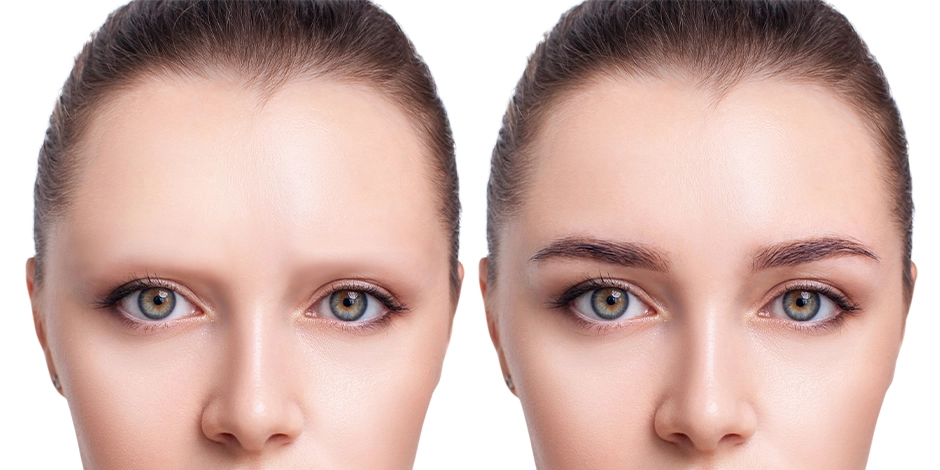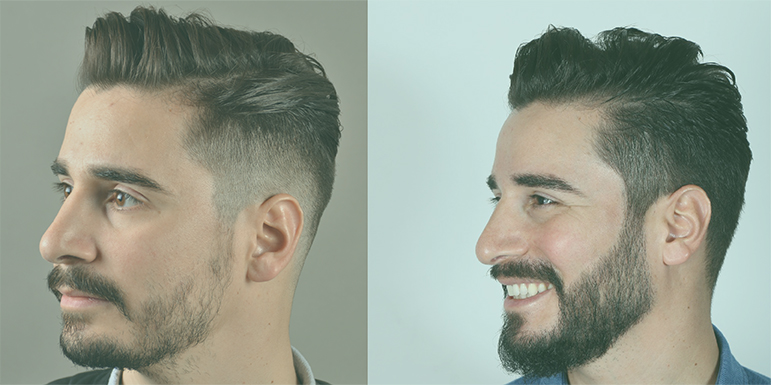
Eyebrow, Mustache and Beard Transplant
Eyebrows, moustache and beard are critical facial features that help define the face and the way we look. In fact, they are as important as hair, as both are central to the face and the eyebrows serve to frame the eyes. Unlike hair loss, beard or eyebrow loss is not considered a natural process. Eyebrows and beard can be lost or shed for a variety of reasons, including other systemic diseases such as thyroid disease, alopecia areata, burns, tattoos, infections, repeated plucking, congenital failure to grow and genetics. Eyebrow transplantation and beard transplantation are similar to hair transplantation on the scalp and are permanent applications. However, since eyebrows and beard have their own unique characteristics, eyebrow transplantation and beard transplantation differ from hair transplantation.
Eyebrow Transplant
The direction of the eyebrow hairs differs in different parts of the eyebrow. In the area of the eyebrow closest to the nose, the eyebrow hairs point upwards, while the hairs on the upper part of the eyebrow point outwards and downwards. The hairs on the lower part of the eyebrow tend to grow outwards and upwards. This diagonal growth pattern causes the hairs in the center of the eyebrows to merge and form a thin natural height that extends horizontally from the center of each eyebrow.
The second distinctive feature of eyebrow hairs is that the hairs emerge from the follicle at a very acute angle, so that the hair grows straight towards the skin surface. The third distinguishing feature of eyebrow hairs is that the hairs grow as individual strands, rather than as a grouping of hair follicular units containing 1 to 4 follicles, which is characteristic of the scalp in the classical sense. The fourth distinguishing feature of eyebrow hairs is the very short hair growth cycle. This means that eyebrow hairs will enter the resting (telogen) phase and grow about 4 months before they fall out (anagen). In contrast, scalp hair has a growth phase that can last from 3 to 7 years, which makes the hair much longer.
Based on all these, the most important part of eyebrow transplantation is to know the natural hair direction and to transplant eyebrows at that angle. In the middle part of the eyebrow, very subtle angle changes are required to recreate the fan-like spreading of the hairs and the converging hair direction as it moves laterally along the eyebrow. Most importantly, when transplanting the hairs, it should be done with very fine needles that literally glide along the skin surface, as this will ensure that the hair lies as straight as possible.
Another important part of eyebrow transplantation is that only individual hair follicles can be used. Since the scalp naturally consists of 1 to 4 hair follicular units, the hairs taken from this area should be reduced to only 1 hair follicle using a stereo microscope. Technically speaking, eyebrow transplantation is actually an ultra-refined form of micrografting. Single hair micrografts placed in recipient sites formed at very acute angles to the skin surface require considerable skill and experience. In addition, if the patient's hair is wavy or curly, it is especially important to rotate the hair so that the curve of the hair shaft follows the natural curve of the eyebrow. Although eyebrow transplantation is a safe and aesthetically elegant procedure, there are a few things to consider before undergoing this type of transplantation. The hair that is taken from the hair and transplanted into the eyebrows continues to grow and therefore needs to be trimmed periodically.
Create a preliminary interview request for all your questions about Hair Loss and PRP procedures.
Scientific
Safe
Effective
Beard and Moustache Transplantation
It is quite difficult for many men to grow a beard and mustache. Even the most favorite beard shape of recent times, which is expressed as stubble, may not grow in the desired appearance for different reasons. Stubble does not always grow evenly on the face, resulting in facial hair that looks like patches instead of a stylish beard. Insufficient volume of beard or mustache hair due to hereditary reasons, sparseness, the formation of gaps as a result of a blow, burn trauma or for a different reason also disrupts the hair harmony in the beard or mustache area.
Just like hair transplantation, we can perform beard or mustache transplantation by using your own hair and cooperating with your facial hair follicles. We can only decide whether you are a suitable candidate for beard transplantation after an examination.
For those who want to have mustache or beard transplantation due to sparse, voluminous or the reasons I have just mentioned, we either use the beard area again as a donor area or we can transplant from the back of the head between the two ears. When a beard transplant is performed, the follicle adapts to its new environment and accompanies you throughout your life to reach your desired goal. Beard transplantation sounds extremely simple when described in this way, but it is actually a very complex process.

The follicular unit extraction (FUE) approach is preferred for beard transplantation and is performed by transferring whole follicular units collected one by one from the donor area. Treatment goals for beard transplantation are usually determined by the patient. Patients describe how they would like their beard or moustache to look and then, if the volume they envision is possible, the planning phase begins. Of course, beard or mustache transplantation is not only performed with the aim of a volumetric increase. At the same time, beard or mustache transplantation can be considered in places where there is very little hair in the area, on the scar, even for camouflage of a congenital problem such as cleft palate.
The design, density and quality of the beard is actually directly proportional to the amount of donor area. Full beard transplantation requires large grafts. Patients should always be informed about the possibilities regarding the amount of grafts. If necessary, a second transplant can be planned after 1 year. If patients are informed about the potential limitations of the donor, they will adjust their expectations after beard transplantation accordingly.
Of course, the number of grafts varies depending on the design and density, but considering that we are doing a full-face beard and mustache transplantation, an average of 250-300 grafts per sideburn, 400-800 grafts per mustache and 300 to 500 grafts per cheek is a reasonable proportion. These numbers may vary according to the pre-existing hair, design and thickness of the hair.
After the roots are taken from the donor area, each root is transplanted one by one, creating a natural beard and mustache line. Beard and mustache transplantation is a comfortable process, the transplantation process can be completed in 3-4 hours on average. A few days after beard transplantation, small crusts may form around the newly transplanted hair follicles, but these will flake off within a few days. After about a week to 10 days, you can start shaving normally and trim your new beard. However, just like with a hair transplant, you may also experience a shock shedding phase. After 2 or 3 weeks, shock shedding is a normal process and your beard and mustache will grow back.
